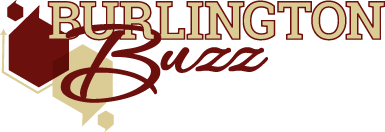Where Your Tax Money Goes: A Simple Guide to Burlington’s $187M Budget
Curious where your tax dollars go? We break down Burlington’s FY26 budget in plain English. Hint: Bookmark Page 23 for a great one-page overview.

We all know we pay taxes to fund infrastructure and services. But what does that actually mean?
In Burlington's annual Town Meeting, which begins this year on May 12, 2025, your 126 elected representatives will meet in the Burlington High School auditorium to review the operational and capital budgets for the upcoming fiscal year, which runs from July 1, 2025, through June 30, 2026.
Once the budget and capital items are approved, those amounts will be used to calculate a tax levy, which the Select Board will enact, thus setting the amount of taxes you pay and funding the budget that was approved by Town Meeting.
The great thing about local budgets – as opposed to the federal one, which can be dense, distant, and difficult to parse – is that they're (relatively) short and easy to understand. Also, you've got a local news source here that is committed to making sure you understand it all.
The operational budget is the first actionable article on the Town Meeting Warrant this year – Article 2, following reports from town officers and committees. The article looks simple and straightforward, until you open the budget book and reveal 151 very dense pages of figures, tables, text, departmental budgets, and even letters from the Town Administrator and the chair of the Ways & Means Committee (the town's finance committee). This article will give an overview of the budget, covering the first 24 pages of the budget book and showing you where to find information to help you understand your town's FY26 operating budget.
First and foremost, Page 3 lists all the contributors to the budgeting process. Most of these folks are volunteers; if you ever see one of them in the wild, thank them for their work and dedication! Following that, is the table of contents which will guide the reader through the book.
After the front matter at the beginning, you'll see the main budget is laid out as recurring and non-recurring expenses, recurring and non-recurring revenue, and then the operating budgets by category. Following the budgets are Supplemental Information and the Capital Improvement Plan, and then there is a glossary at the end. Keeping these buckets in mind can help organize your approach to looking at the document and make it feel less daunting.
The Table of Tables & Figures on Page 8 highlights the different points of interest you might be interested in, such as who Burlington's highest commercial taxpayers are and the town's per capita income.
Following that table, Section 1 begins in earnest with a letter from Ways & Means Chair, Doug Davison, followed by one from Town Administrator (former), Paul Sagarino. We recommend reading the letters on your own, because they describe succinctly the town's approach to creating this budget. Here are some highlights in case that's too much reading for you right now:
From Davison:
The goals for this budget were to maintain level services where possible, prioritize investment in infrastructure, minimize fees, and to plan for long term financial liabilities as a result of significant capital investment. The following assumptions were used: expect an increase in local receipts and state aid which have recovered from the disruptions of COVID, expect an increase for accommodated accounts of 7%, set minimal operating budget increases, and control the total tax levy increase within a range of 4.5% - 5.5%.
With these assumptions in place, FY26 guidelines were set at 2.5% increases for the school and town operating budgets and a 7% increase in the accommodated accounts.
He goes on to describe the budgeting process, then speaks on capital budgeting:
This year we have worked with town administration, the school department, and the Capital Budget Committee to move toward a more specific and detailed list of anticipated capital requests for the next 10 years. We encourage the development of an appropriately detailed capital budget plan with input from the various departments, Ways and Means, and the Capital Budget Committee under the guidance of town administration, with the goal of having a plan that is realistic rather than aspirational and can help guide fiscal planning.
This is a nod to the express desire from Town Meeting members and other community members for a capital plan that better anticipates and plans for the town's needs and schedules out large capital projects in a more distributed way so that citizens and town administration can see what's coming and better plan for it. The fact that the town has two schools and a police station that need to be replaced in a very short time period has led to these calls becoming louder and more persistent.
Sagarino's letter outlines the town's long-term priorities for this nearly $187-million budget – a couple of basic ones, like maintaining our bond rating (making borrowing money less expensive for the town) and managing our liabilities, as well as some exciting ones like "Promote Burlington and Support Existing Businesses" and "Invest in the Town Center."
Taken together, these two letters give a thorough overview of how the town's Administrator and Finance Committee view the town's position now; needs, goals and plans for the short- and long-term; and concerns to keep in mind. Everyone living in Burlington, even those not participating in Town Meeting, would benefit from this information, and we recommend reading it!
Next up is the town's organizational chart, which is a handy overview of the structure of the people who get things done in our town. After that, the budget book features a brief overview of Burlington and the budget process laid out as a narrative, calendar, and cycle.
Page 23 gives a one-page overview of this year's budget. Revenues are listed on the left-hand column, expenditures are on the right, and the two circle graphs in the middle show an even higher-level view of the same: revenue by source and expense by category. Page 24 shows the budget over the last five years.
That's a lot of information, and the budget will still be here tomorrow, so we'll end here for now. The next article in this series will go deeper into the particulars of Burlington's budget.
This year’s Annual Town Meeting will begin on Monday, May 12, at 7:00 PM and will continue on Wednesday and Monday evenings until the entire Warrant has been reviewed. Stay tuned to the Buzz for summaries of the articles in the Town Meeting Warrant and how Town Meeting votes on each.





